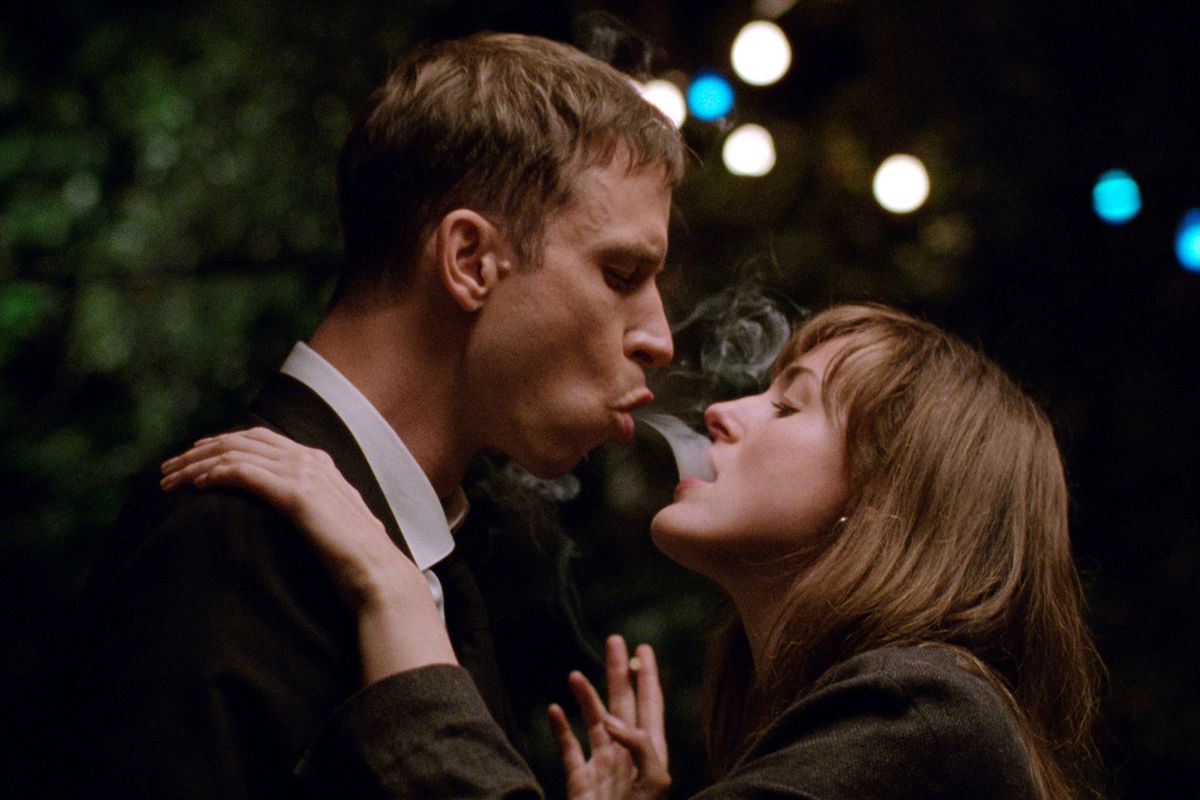In The Worst Person in the World, director Joachim Trier and lead actress Renate Reinsve explore a fascinating, imperfect, and sorely relatable, well, person.
“I feel like a spectator in my own life,” Julie says during a difficult breakup, frustrated over her struggles to find direction in life. Julie (Renate Reinsve) shares the same feelings as many young adults attempting to figure everything out before their years of promise flash by. One character asks Julie the dreaded question, “What do you want to do as a career?” As our 20s become 30s, the expectation to find love, achieve life goals, and become the person we want to be bears down on us. This anxiety drives director Joachim Trier’s romantic dramedy The Worst Person in the World, the latest in his Oslo trilogy.
As we learn via opening montage, Julie is a bright college student with equal amounts of ambition and indecisiveness. She enters medical school because it was difficult to get into, but she eventually grows bored, leaves her boyfriend, and finds a new identity through a sudden passion in psychology and a new relationship. However, as if by fate, this quickly dies out too, and she yet again jumps at the next new thing, this time taking up photography.
Trier, along with his co-writer Eskil Vogt, structure the film into twelve chapters that portray distinct moments along Julie’s journey toward self-discovery. An unspecified amount of time passes between each, almost as if time itself is slipping away from her grasp all too quickly. In the present, she is on the cusp of turning 30 and starts a relationship with Aksel (Anders Danielsen Lie), a comic book artist 15 years older than her. They’re in different stages of their lives, something that eventually forms a rift between them. Aksel wants to start a family, but Julie doesn’t want children yet. She tells him that everything in their relationship happens on his terms, and she just wants “to do more first,” but she’s not exactly sure what that “more” is.
In a later chapter, Julie crashes a wedding and meets Eivind (Herbert Nordrum), a cheerful barista who she is instantly attracted to. In one of the film’s strongest scenes, the two play a flirtatious game of truth or dare to find out how intimate they can be without actually cheating, as they are both in long-term relationships. The chemistry between Julie and Eivind is frighteningly evident, leading Julie’s mind to wander as she grows more distant from Aksel.

Julie feels more assured with Eivind. With Aksel, she is more passive, allowing him to push decisions onto her. Trier and cinematographer Kasper Tuxen bring attention to her facial reactions as she does little to change what happens around her. In the later chapters, Tuxen’s camera captures Julie taking more urgent action. She looks to others for approval less often and makes her own decisions. Her newfound confidence is most apparent in the epilogue, where she is in full control as she guides an actress through taking film stills.
Part of Julie’s progression comes from learning to evaluate where she is in life and walk away if necessary to pursue her own happiness. Eivind does the same when he ponders leaving his girlfriend, Sunniva (Maria Grazia Di Meo). He refers to himself as “the worst person in the world” for being selfish. However, they both share a lasting connection with these people as they grow from each experience in their own ways. Their conversations are honest and display a level of intimacy that only two people who truly love each other can have. Through her relationship with Aksel, Julie understands that to find herself, she must be able to look within instead of seeking every answer through her relationships with others.
Coming-of-age films that focus on adults finding their way in their late 20s and early 30s are nothing new. Noah Baumbach’s Frances Ha comes to mind quickly, as it contains themes of desiring change and growth, the need to fulfill one’s potential, and the wish to live every conceivable experience. By comparison, Trier never fully fleshes his protagonist out, leaving Julie’s character to often come off as hollow and underdeveloped. For as much time as the film spends with her, it never figures out what drives her professional and artistic interests, instead choosing to solely concentrate on the innate drama of her relationships.
Advertisement
Her pursuits in photography and writing, for example largely occur offscreen, and when Julie publishes her controversial article, “Oral Sex in the Age of #MeToo,” Trier isn’t interested in showing what effect it has on her confidence as a writer or any impact it has on her career at large. He also refrains from observing the dynamics between her artistry and relationship with Aksel. This greatly narrows the focus of the film, denying the viewer any aspect of Julie’s life outside of her romantic relationships.
All that said, Reinsve’s brilliant performance is really the heart of the film. She takes us along Julie’s journey of self-actualization by expertly balancing her pain and heartbreak with the excitement at moving on to something new. Reinsve perfectly embodies someone trying to find her way through early adulthood and breathes life into her character through long stares into the distance as she reflects on what she’s lost or exuberant smiles in reaction to her many victories.
Despite all of the film’s artistic flair, including a fantasy sequence where all of Oslo freezes, and Reinsve’s incredibly honest performance, the film doesn’t seem to fully understand Julie, much like the character herself. However, Trier captures an emotionally raw journey of self-discovery that viewers will be able to see in themselves. The Worst Person in the World invites us to evaluate our own journeys and come to peace with the fact that life is about the process of figuring things out, not finding all the answers.
The Worst Person in the World is now playing in theaters. Watch the trailer here.
Advertisement
Advertisement







